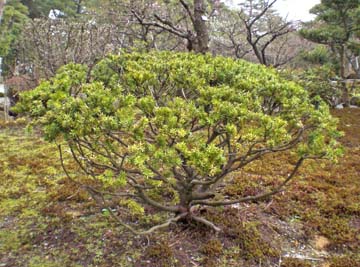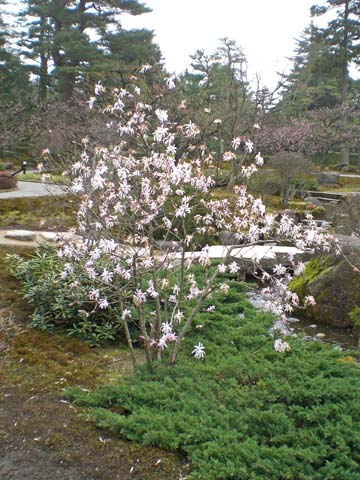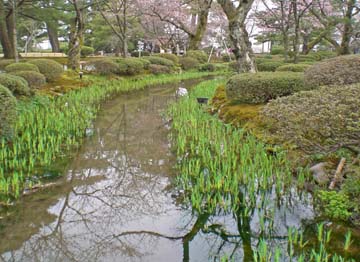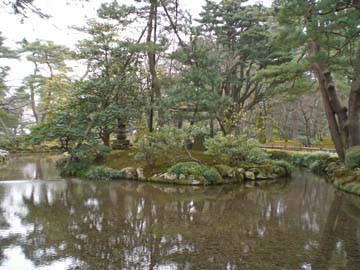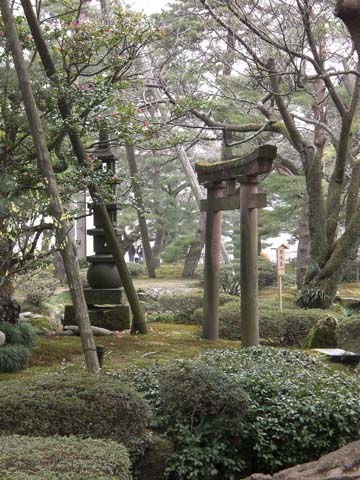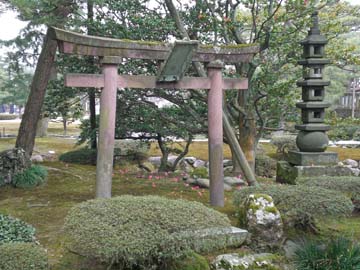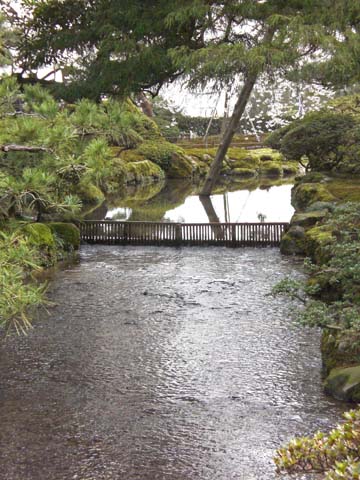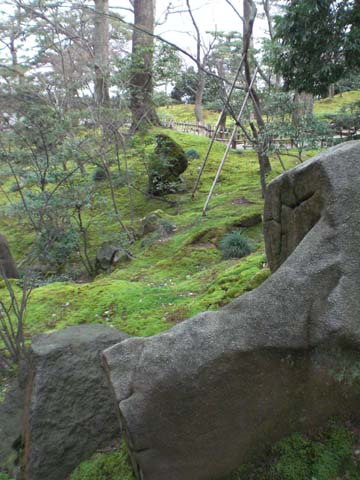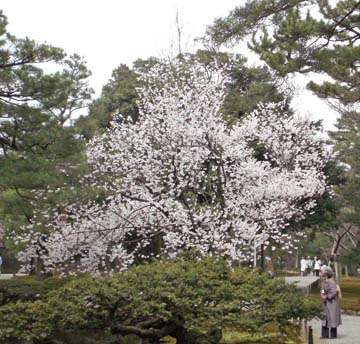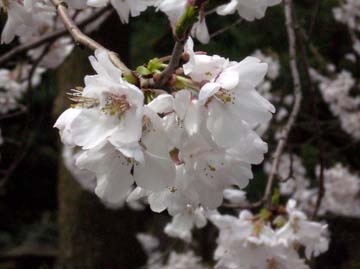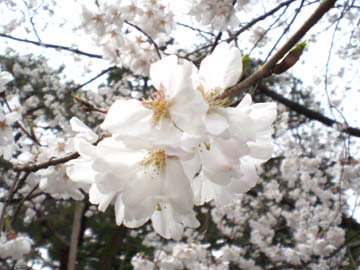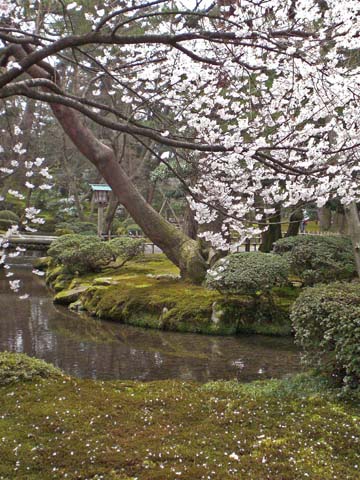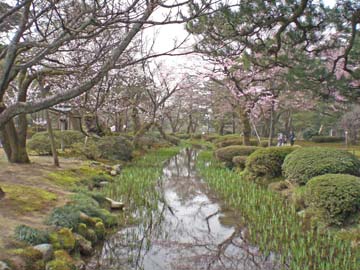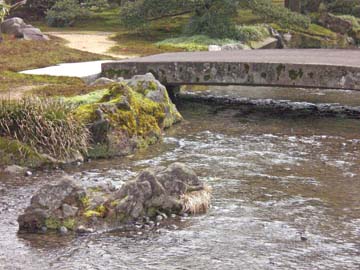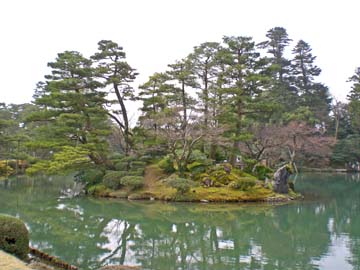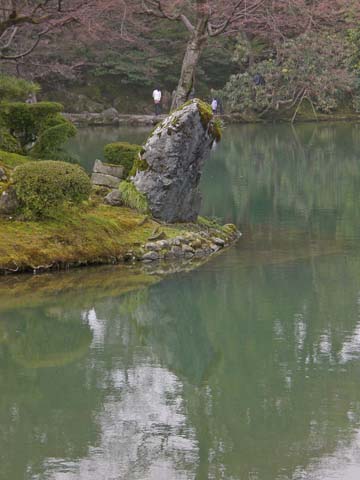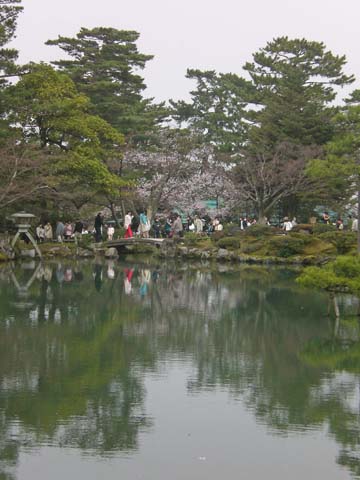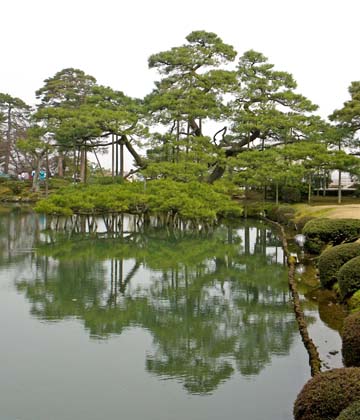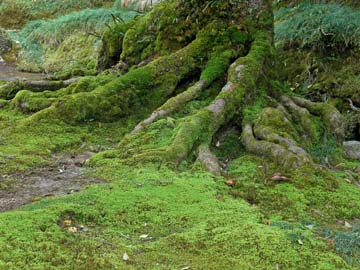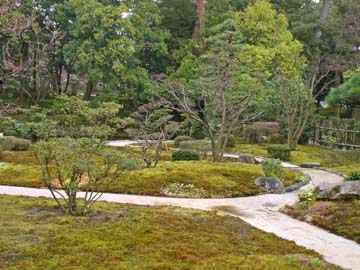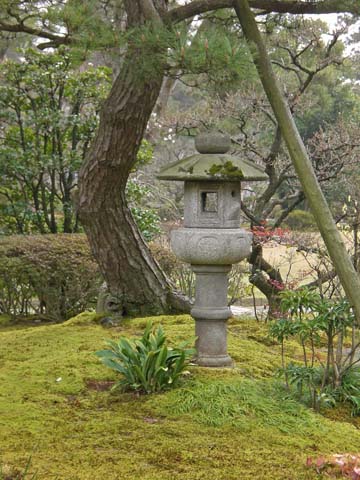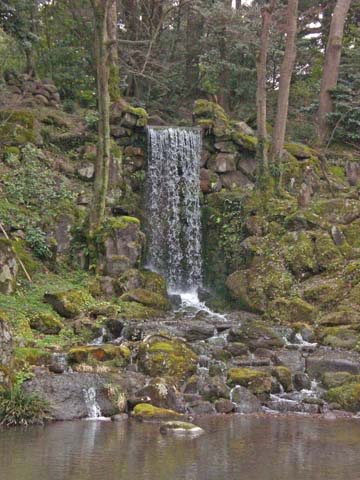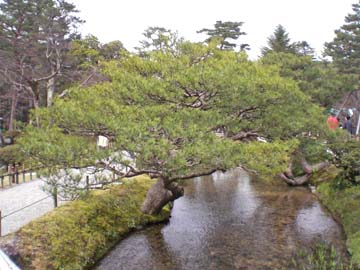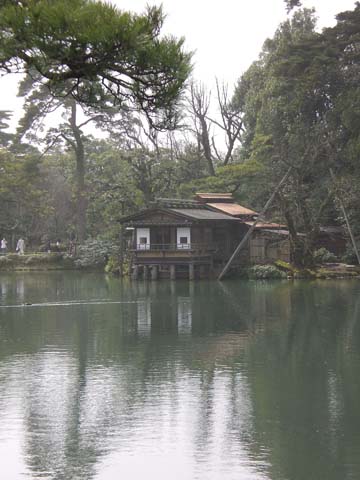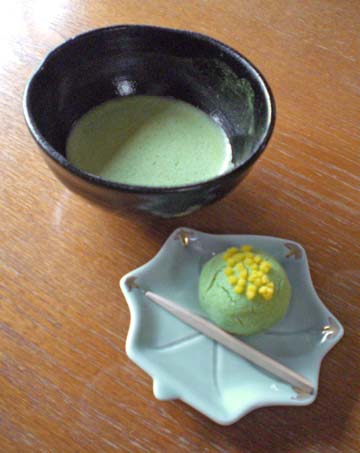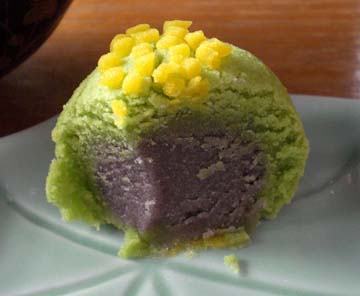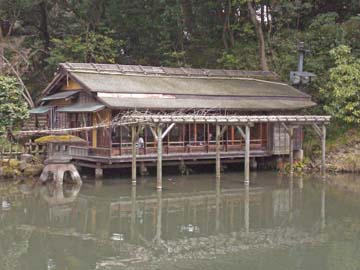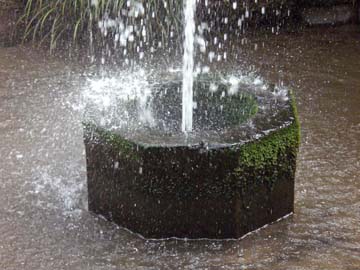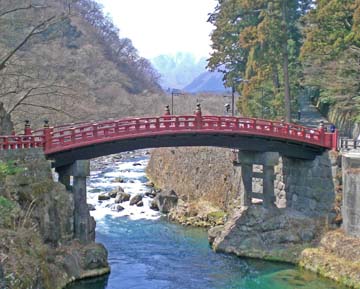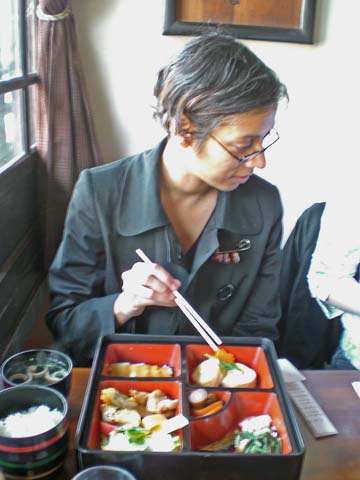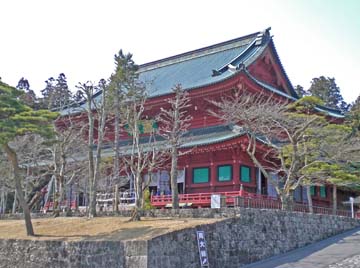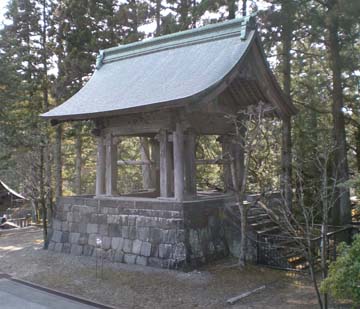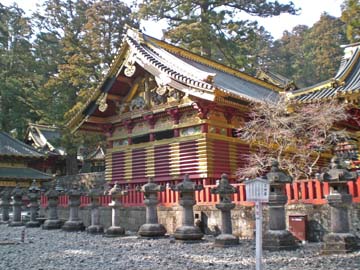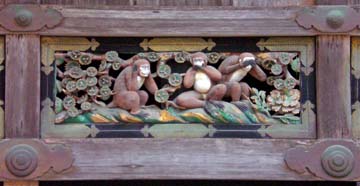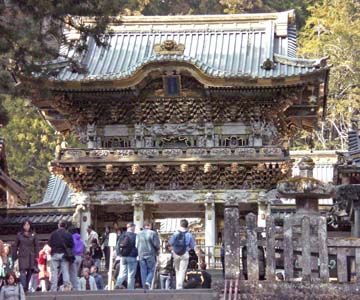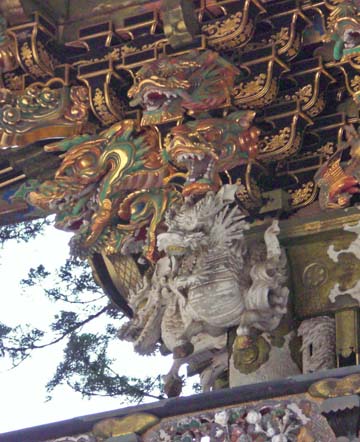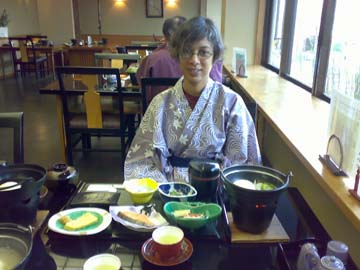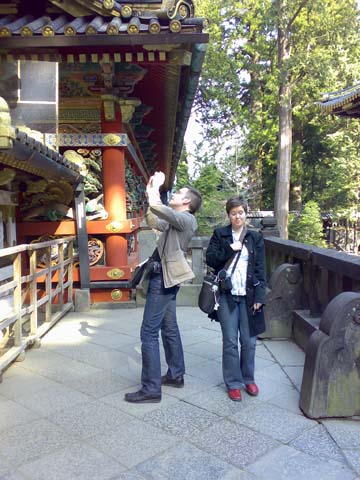From Kyoto we took the short train journey to Osaka and our hotel New Hankyu, next to the main stations in Osaka. Trips on the menu included the castle at Himoji (Himoji-ji) and then a general wander around Osaka itself.
Another of the strange sights we saw in a vending machine. This was 12 year aged water. I presume it’s actually whisky with water in it, but you never know:
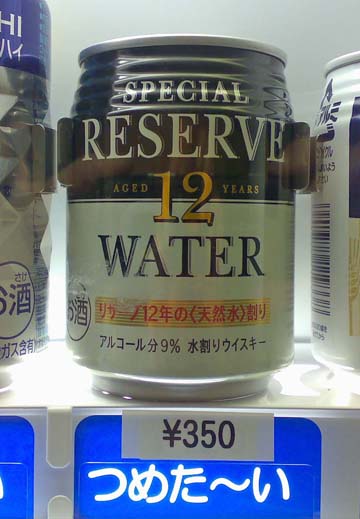
In one of the restaurants we were given bibs, as Bob and Jo are sporting in this photo. It seemed something of a con that so many places either involved eating raw fish or cooking it yourself in the centre of the table which, although fun, seemed something of a let-off for the restaurant staff.
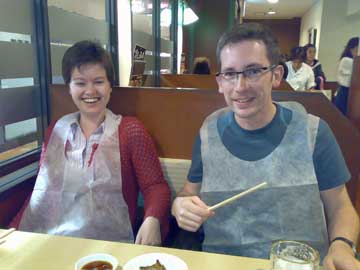
We also passed the Akashi Kaikyo bridge on the way out of Tokyo towards Himoji. This photo is from inside the train but it really is quite a big span and, so I’ve heard, the tops of the supports are further apart at the top than the bottom to take account of the curviture of the earth.
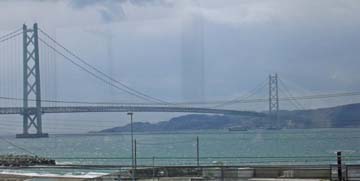
The next set of photos are from Himoji-ji – the huge castle outside Osaka. Although the entry fee includes the grounds and all the way to the top of the castle it’s really only from the outside that much interesting happens. Inside was so crowded (apparently this is Japan’s third most visited attraction) that it really was impossible to do much except follow everyone around in a queue. I wouldn’t recommend bothering to go up to anyone who visited, although the outside is worth a visit.
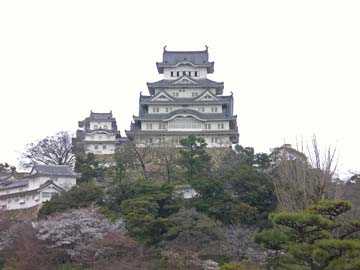


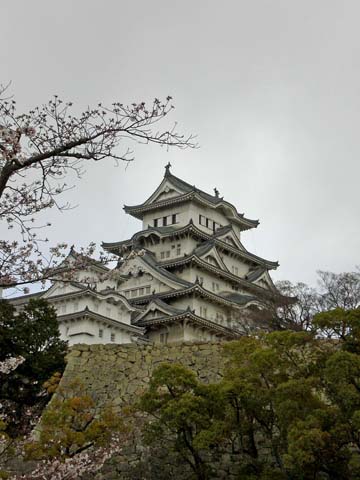
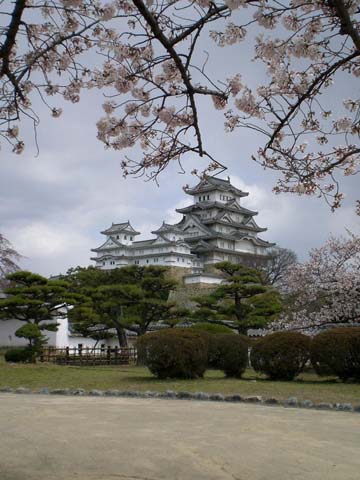
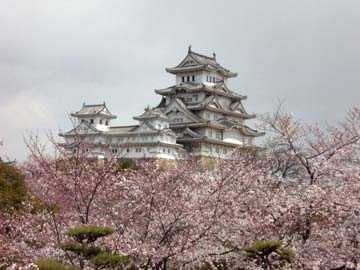

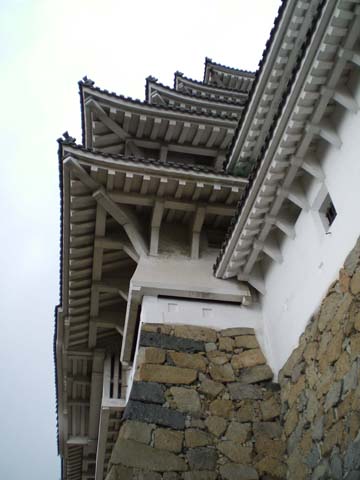
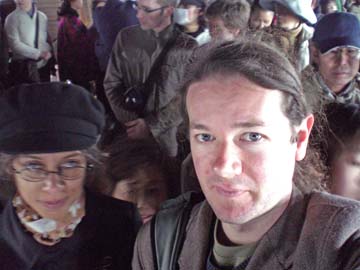
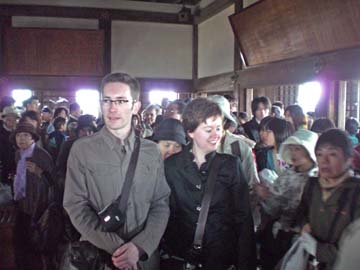

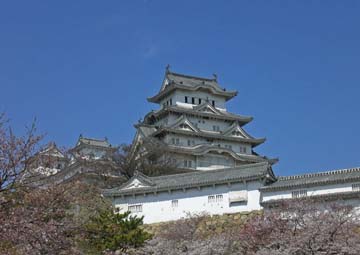
The gardens adjacent to Himoji-ji were also worth a visit and, I would say, more interesting than the castle itself:
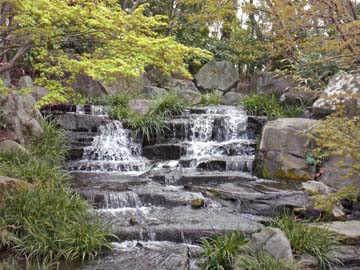
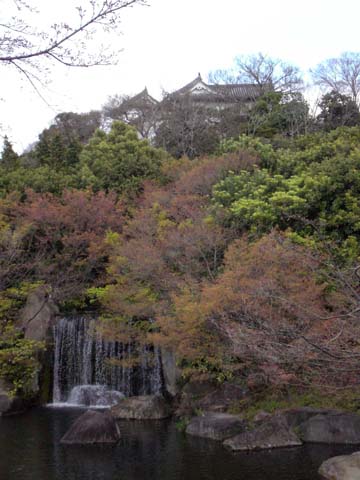
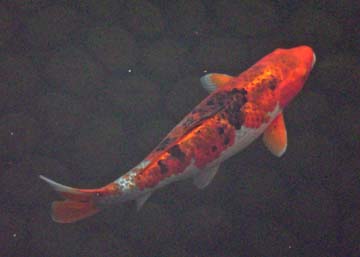

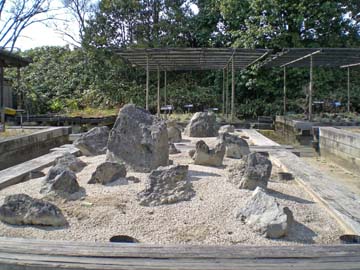
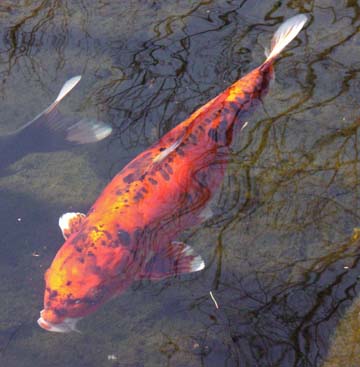

Around the corner from the castle is – oh joy! – some more modern architecture, in the shape of the museum of literature by Tadao Ando. Although an interesting series of shapes I don’t see that it makes a particularly usable building, and there seemed to be a lot of investment in spaces that mostly seem unoccupied. The site was apparently based a lot around maximising views of Himoji-ji itself and although there are good views I don’t see how the design necessarily had a lot to do with them as the main building hides the views behind a large group of trees. But there you go.

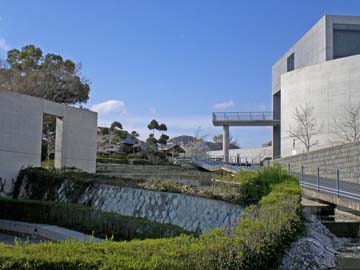

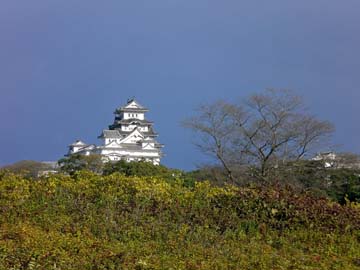
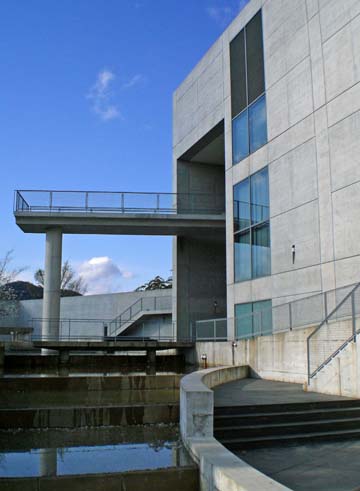
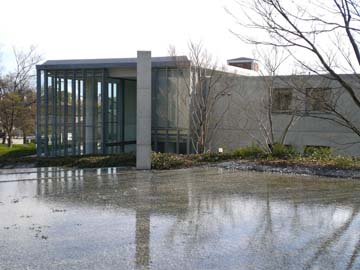
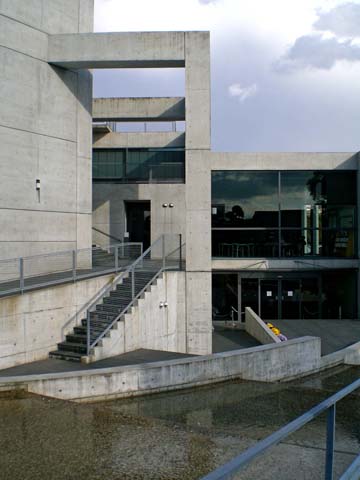
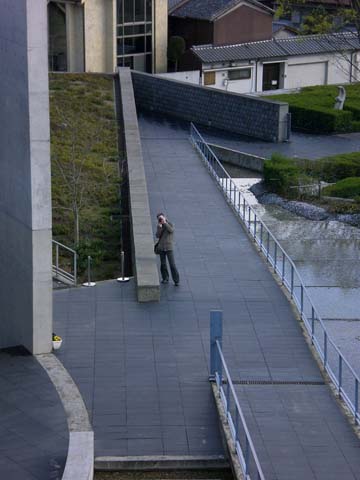
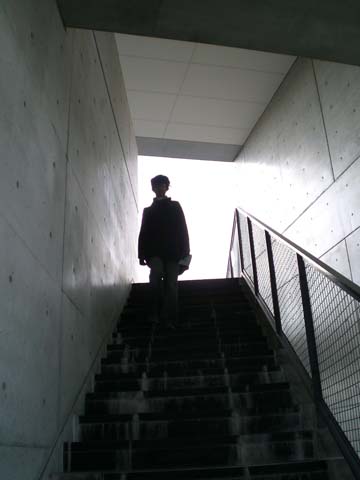
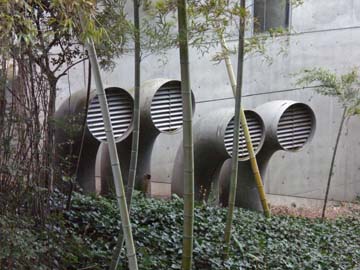

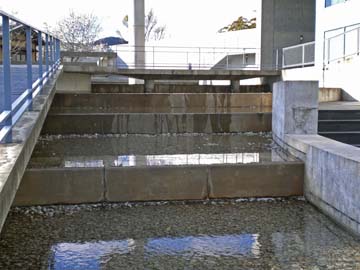
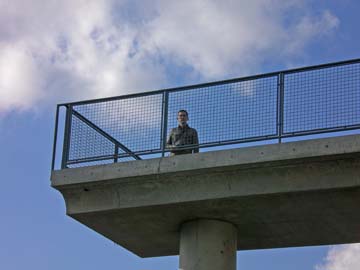
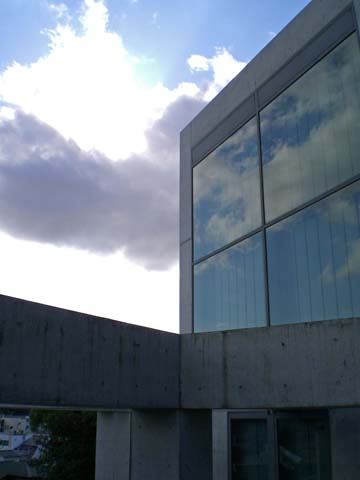



Osaka itself is quite a bustling city and more centralised than Tokyo so, in some ways, easier to get to grips with in a short space of time. We visited the Sky Tower for some views from the top:
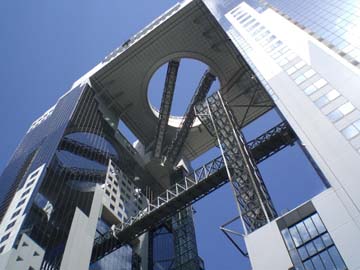
The journey up the Sky Tower itself is quite dramatic – a glass lift from about the 7th floor upwards which is quite an exhilarating ride. The last couple of floors are on an escalator which goes right through the central hole in the photo above and inside one of the two diagonal struts you can see above.
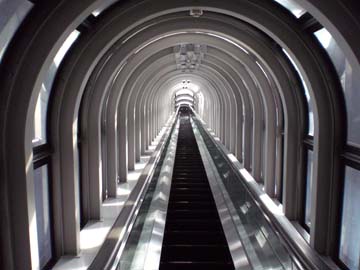
A model of the Sky Tower:
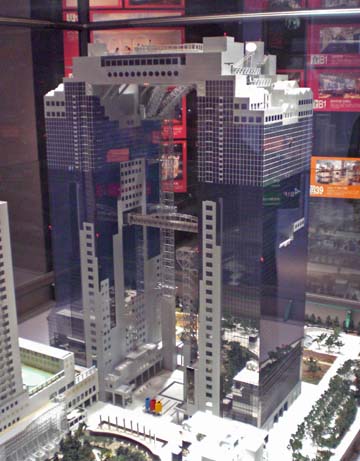
From the Sky Tower, views of Osaka:


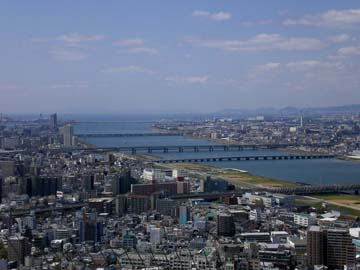
A shot of the escalators from above:

Another example of how the Japanese really don’t mess when it comes to flyovers. This one goes right through the middle of a building:
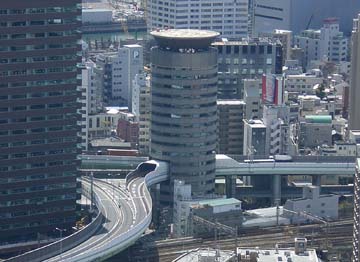
One of the stranger pieces of ‘modern’ architecture, this hotel has what is, I suppose, a gothic wedding chapel half way up the building:

Another interesting sight in Osaka is the ferris wheel (an ever-popular Japanese installation – I saw more in two weeks in Japan than the rest of my life to-date) on top of a shopping complex:

Some parts of Osaka are more over-the-top than any part of Tokyo I found. This area was so full of advertising and lights that it was an overwhelming experience. Photos don’t really convey how full-on it was, but imagine being locked inside a small room with an entire fairground and you’ll get some of the idea.

We found an excellent restaurant around the corner, however, called Kakureya. The owner spoke excellent English and despite only having a Japanese menu was able to serve us up an excellent meal of nabe and, to our surprise, a free dish of rare beef to try and a couple of glasses of Sochyu. He was so good to us that I really hope anyone else going to Osaka tries them out.
This photo shows us four in Kakureya:

Another strange Osaka sight: a giant head, with legs. In true bizarre Japanese fashion, each head also had buttocks:
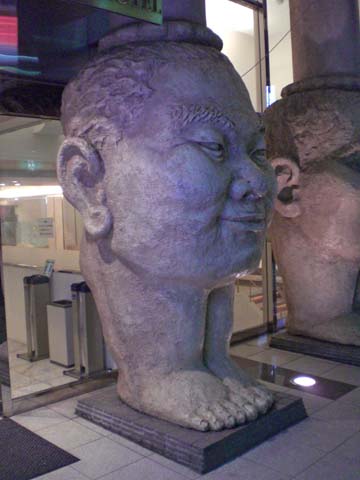
Another view of the ferris wheel on the department store:
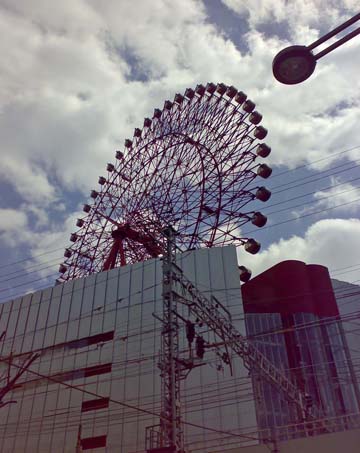
Inside the department store were a number of ice-creams and things on sale. This one was amongst the most over-the-top: a sundae with a whole piece of cake on top:
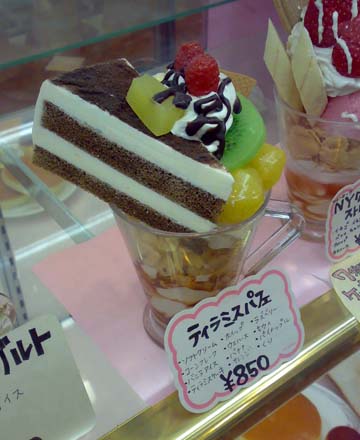
We tried some ‘cider meets condensed milk’ and it actually wasn’t all that bad. Here is Bob’s endorsement (and note how he’s showing the label on the can like a real pro):
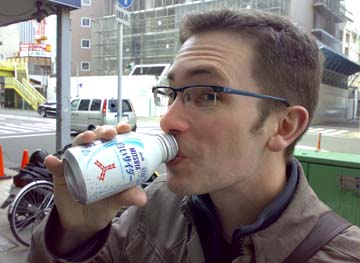
Download all photos in high res (over 200mb total)
Next: Japan Trip, Part 8 – Koyosan

























